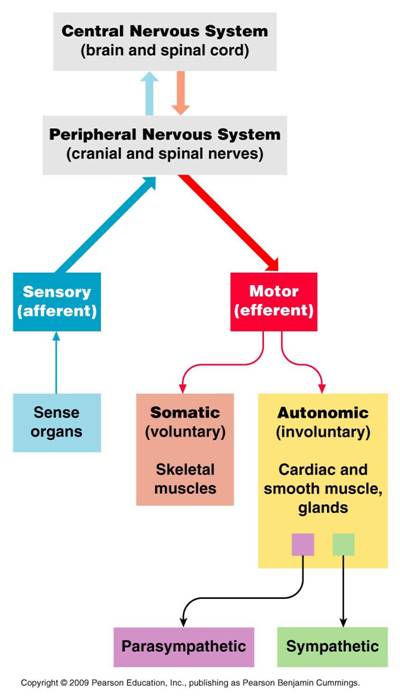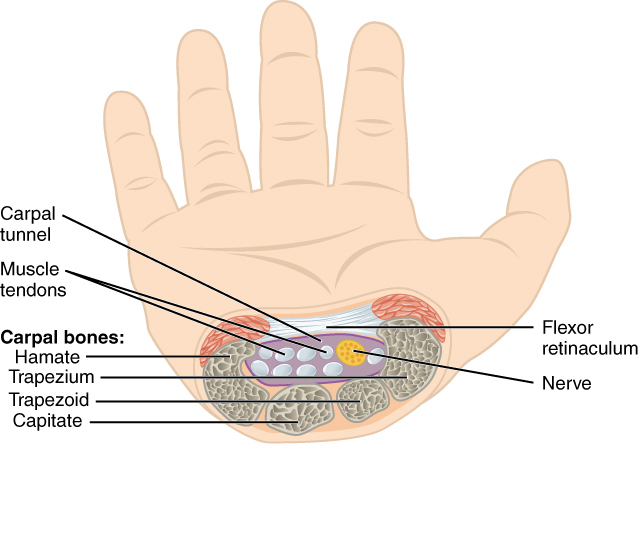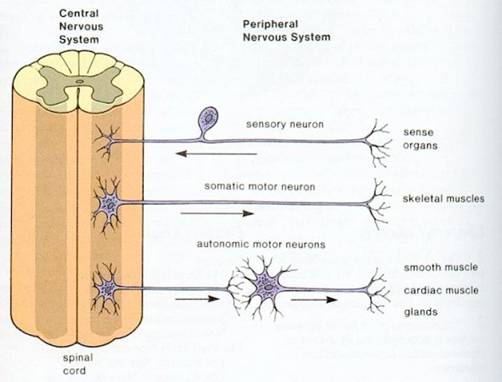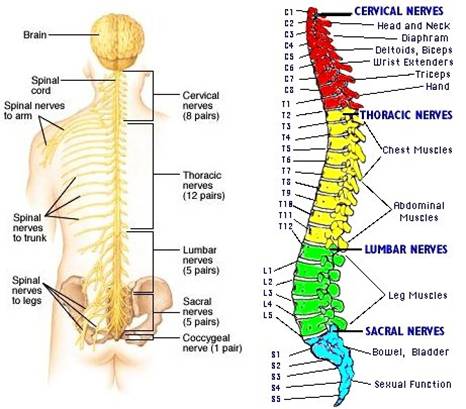Nervous System 101

The nervous system is divided into two parts:
(1) Central Nervous System (CNS)
– brain and spinal cord
(2) Peripheral Nervous System (PNS)
– cranial and spinal nerves.
Nerves pass messages to and from the CNS
Sensory (afferent) Neurons.
Transmit impulses TO the CNS from the sense organs
Motor (efferent) Neuron System.
Transmits impulses FROM the CNS to effectors.
Motor neurons act either by conscious decision or “behind the scenes”
a) Somatic (voluntary) Nervous System – directs contraction of skeletal muscles
b) Autonomic (involuntary) Nervous System – controls activities of organs and various involuntary muscles, such as cardiac and smooth muscles. Has 2 systems that generally target the same organs but are antagonistic.
i. Parasympathetic Nervous System – “Rest and Digest” or “Brake” – activates tranquil functions. E.g. secretion of saliva or digestive enzymes.
ii. Sympathetic Nervous System – “Fight or Flight” or “Accelerator” – prepare body for action. E.g. increasing heart rate, increasing sugar release from liver to blood.
PNS Cranial nerves
12 pairs of nerves connecting the brain to parts of the head, neck and trunk, each named for its function or structure. Categorized as sensory (for senses such as smell, hearing, touch) or motor nerves (control movement / function of muscles or glands).
I. Olfactory nerve – sends sensory information on smells to the brain
II Optic nerve – sensory vision from retinal rods (black/white, night vision) and cones (color information) sent to visual cortex in the back of the brain
III. Oculomotor nerve – brain sends eye socket muscle function (for focusing) and pupils (for light response)
IV. Trochlear nerve – brain controls superior oblique muscle in the eye sockets, responsible for downward, outward and inward eye movement
V. Trigeminal nerve – largest cranial nerve has 3 divisions
- Opthalamic: sends sensory information from upper face, including forehead, scalp, upper eyelids
- Maxillary: sends sensory information from cheeks, upper lips and nasal cavity
- Mandibular: sends sensory information from ears, lower lip and chin; controls muscle movement in jaw and ear
VI. Abducens nerve. Controls laterus rectus muscle in eye socket for outward eye movement
VII. Facial nerve.
- Moves muscles for facial expressions and some for jaw movement
- Sensory nerve for taste (most of tongue)
- Supplies head and neck glands e.g. salivary and tear-producing glands
- Sensory from outer parts of ear
VIII. Vestibulocochlear nerve. Specialized cells in cochlear of ear detect sound vibrations of loudness and pitch. Other special cells in vestibular area of ear track linear and rotational head movements for brain to correct balance and equilibrium.
IX. Glossopharyngeal nerve.
- Sends information from sinuses, back of throat, parts of inner ear and senses taste from back area of tongue
- Stimulates voluntary movement of muscle in the back of throat
X. Vagus nerve. This busy nerve:
- Senses / conveys information from ear canal, parts of throat, heart and intestines (and other chest / trunk organs), and a sense of taste rear root of tongue.
- Allows motor control of throat muscles, peristaltic movement through digestive tract, and stimulates other chest / trunk organs
XI. Accessory nerve. Controls neck muscles for rotating, flexing and extending neck and shoulders. Two parts: spinal and cranial.
XII. Hypoglossal nerve. Controls most tongue muscles















